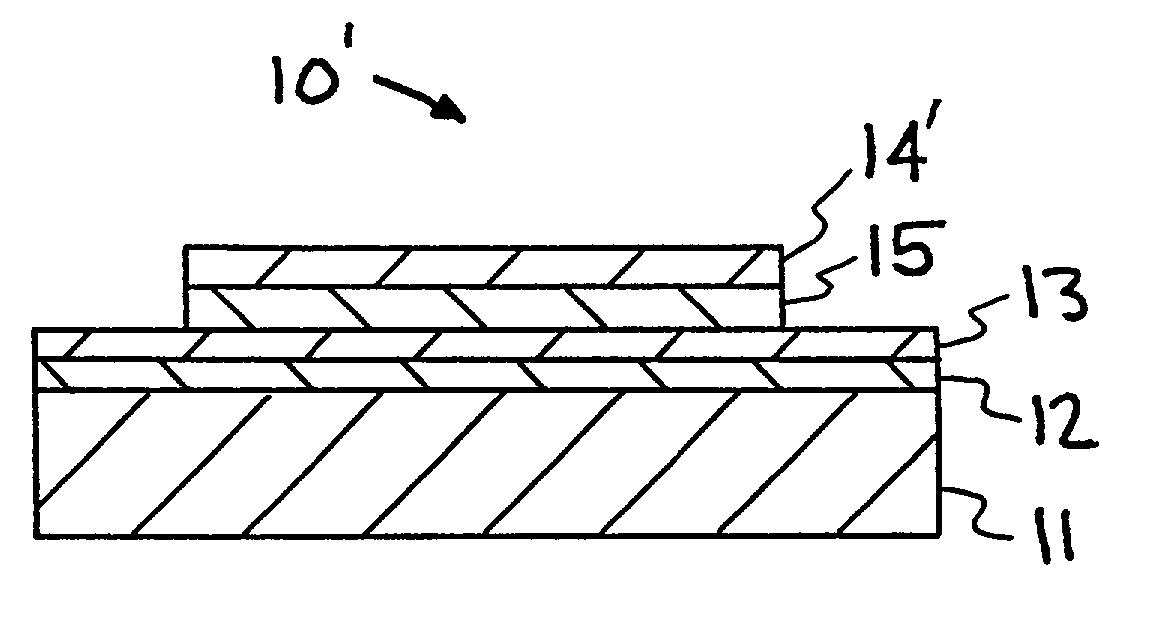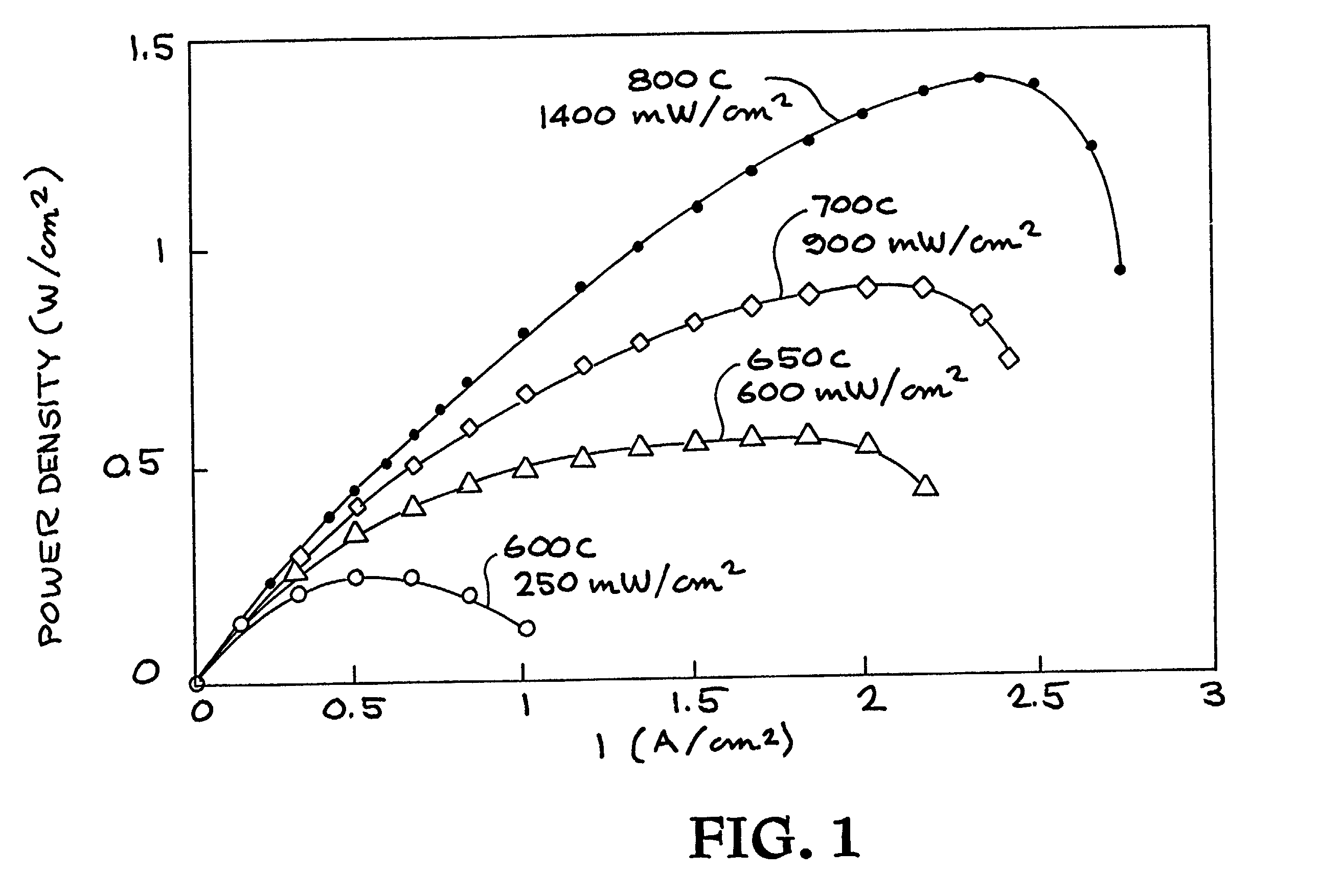High power density solid oxide fuel cells and method of fabrication
a technology high power density, which is applied in the direction of cell components, final product manufacturing, sustainable manufacturing/processing, etc., can solve the problems of low power density, high cost, and inability to realize the commercialization of solid oxide fuel cells in the near future, and achieves the effect of higher performan
- Summary
- Abstract
- Description
- Claims
- Application Information
AI Technical Summary
Benefits of technology
Problems solved by technology
Method used
Image
Examples
Embodiment Construction
[0017] The present invention is directed to high power density solid oxide fuel cells (SOFCs) produced by a method which at least includes the formation of a buffer layer by a colloidal spray deposition (CSD) technique between the electrolyte and the electrode. The SOFCs of this invention includes a cobalt iron based electrode and a zirconia electrolyte with a doped-ceria buffer layer therebetween. As the result of producing a doped-ceria buffer on a zirconia layer without cracking by use of the CSD technique, SOFCs with cobalt iron based electrodes have been produced having a power density of 2-3 times greater than SOFCs using conventional (La,Sr)MnO electrodes. The SOFCs described herein and tested for power density utilized a cobalt iron based electrode, such as (La,Sr)(Co,Fe)O (LSCF) a zirconia electrolyte, (yttria-stabilized zirconia or scandia doped-zirconia), and a buffer layer of doped-ceria, with the doping element being any element of the lanthanides, but preferably gadoli...
PUM
| Property | Measurement | Unit |
|---|---|---|
| Temperature | aaaaa | aaaaa |
| Thickness | aaaaa | aaaaa |
| Density | aaaaa | aaaaa |
Abstract
Description
Claims
Application Information
 Login to View More
Login to View More - R&D Engineer
- R&D Manager
- IP Professional
- Industry Leading Data Capabilities
- Powerful AI technology
- Patent DNA Extraction
Browse by: Latest US Patents, China's latest patents, Technical Efficacy Thesaurus, Application Domain, Technology Topic, Popular Technical Reports.
© 2024 PatSnap. All rights reserved.Legal|Privacy policy|Modern Slavery Act Transparency Statement|Sitemap|About US| Contact US: help@patsnap.com










